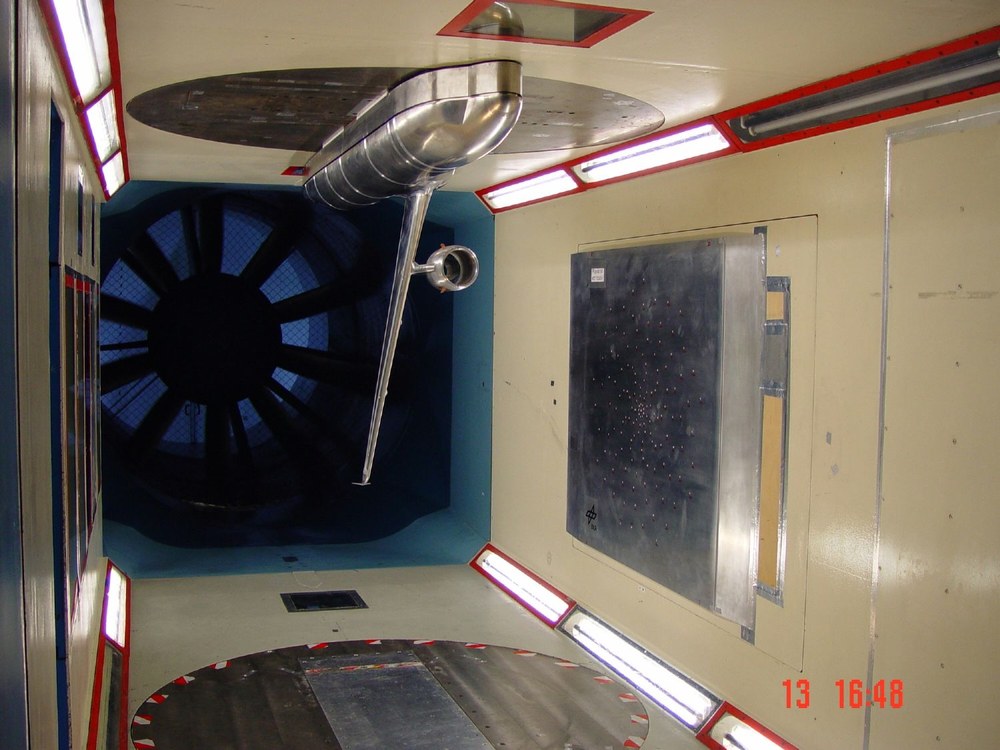Microphone array


The position and the strength of sound sources radiated by an aircraft model in the wind tunnel can be measured with a microphone array. By means of a large number of microphones which are usually placed in a two dimensional plane the source distribution on the model can be calculated and illustrated in so called noise maps. These maps provide the possibility to identify dominant noise sources within minutes and are therefore an important noise reduction tool. The measurements with a microphone array can even be performed in wind tunnels with a high background noise level.
The sound waves that are radiated from the aircraft model are measured by the microphones on the array. The different travel time from one source position on the model to each microphone on the array leads to a phase shift. This shift can be compensated in the post processing analysis by shifting the recorded microphone signals in accordance with the travel time between source and microphone. These delayed microphones signals are then added up. Signals that are emanated from the source position are superposed constructively whereas signals with a not matching phase are suppressed.
In practical applications a grid is defined which lies on the surface of the model and covers all possible source positions. The described analysis is applied to all grid points and therefore the microphone array focuses successively on all possible sound sources on the model. The resulting two dimensional distribution of the source strength on this grid is often called "noise map". It is usually calculated for one frequency or one frequency band and gives information about the source distribution in this frequency range. The results can also be integrated over an area which is defined for example by a structural part of the aircraft model. The resulting spectrum gives an estimation of the spectral noise distribution of this part of the model.
The microphones arrays of the DLR Institute of Aerodynamics and Flow Technology allow measurements both in the closed and in the open test section. The mobile array has been successfully used in several low speed wind tunnels to identify the dominant airframe noise sources.
